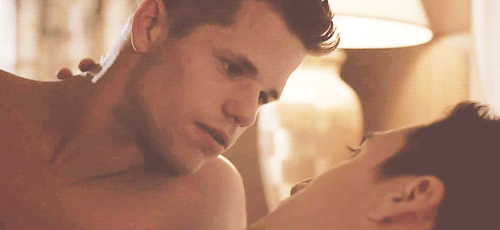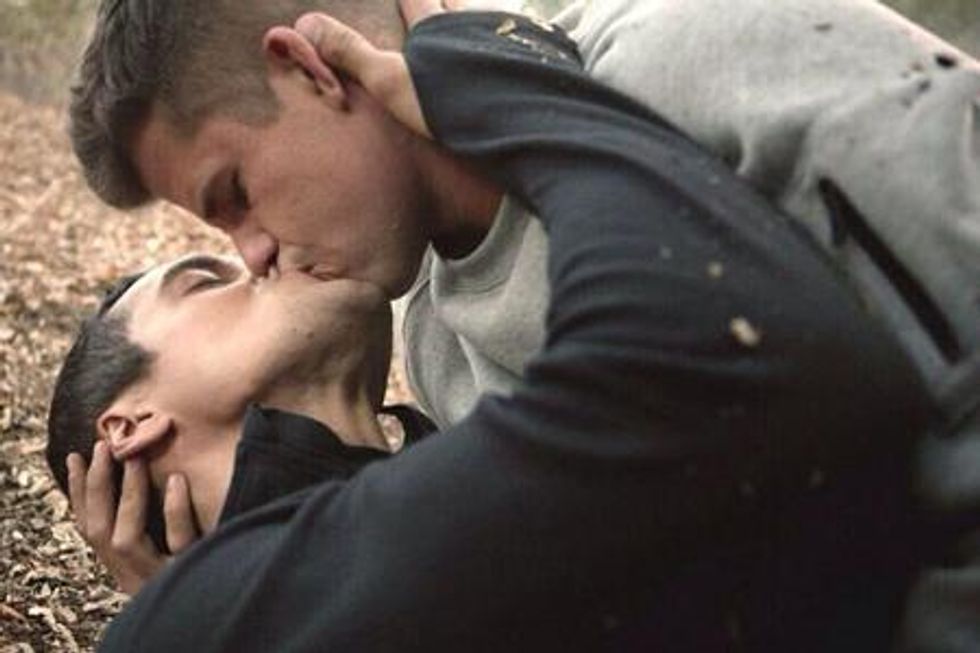
Weak references to LGBT characters and storylines on TV aren't enough for millennial viewers.
September 17 2014 8:00 AM EST
By continuing to use our site, you agree to our Privacy Policy and Terms of Use.

Weak references to LGBT characters and storylines on TV aren't enough for millennial viewers.
When Teen Wolf debuted June 5, 2011, on MTV, many gay fans immediately zeroed in on the show's queer appeal. Of course, any story dealing with werewolves would've found a home in the hearts of several LGBT fans -- after all, this is a story about people forced to hide who they really are.
But Teen Wolf also flipped the objectification script by flaunting the buff bods of the boys in its cast at every opportunity, including numerous homoerotic locker room scenes, and then took it even further. Boys would flirt with boys as well as girls -- most frequently by Stiles Stilinski (played by Dylan O'Brien). Before long, it became obvious that the creative minds behind Teen Wolf weren't simply using queer elements to infuse the show with gay appeal, they were ramping up the gay appeal to court a young audience. And this audience had grown up with LGBT visibility in various forms.
The show existed in a world where homophobia was nonexistent -- a groundbreaking concept, even in basic cable. The presence of out gay teen Danny Mahealani (played by Keahu Kahuanui) among the show's cast of supporting characters was a monumental shift for a gay character on a TV series aimed at a young teen audience. Not because Danny was a part of the world, but because of the way every other character reacted to him. The straight characters on the series weren't simply OK with the fact that Danny was gay. His sexuality was treated no differently than differences in eye color. Instead of being taunted by the star jock of Beacon Hills High -- Jackson (played by Colton Haynes) -- Danny was his best friend.
Though Danny's screen time was limited compared to the heterosexual leads in the cast, he quickly became a fan favorite. However, the biggest LGBT draw for many fans was Stiles, thanks to the numerous hints dropped throughout the series that the character might not be straight. Furthermore, the sexual tension perceived by many fans between Stiles and the werewolf beefcake Derek Hale (played by Tyler Hoechlin) fueled fan fantasies even further, prompting a number of fans to ship the two as a couple (affectionately referred to as Sterek).
By the time Teen Wolf entered its third season, the show was primed to be one of the gayest ever aimed at a young audience. A new gay teen was introduced in the form of alpha wolf twin Ethan (played by Charlie Carver), who became romantically involved with Danny, and "Sterek" speculation, which had been encouraged by the show's cast and production team, was at an all-time high.

Additionally, the is-he-or-isn't-he draw of Stiles's sexuality became less of a reason to watch and more of a point of contention for several fans who began to accuse the show of "queer baiting" by continuing to tease viewers that the character might swing both ways while avoiding any actual payoff.
When news originally broke that Teen Wolf's fourth season, which wrapped last week, would include a new gay teen of color named Mason (played by Khylin Rambo), many fans were hopeful that the show's potential to greatly further LGBT visibility would be realized.
Instead, the opposite happened.
Stiles became romantically involved with the female werecoyote Malia (played by Shelley Henning), Danny completely disappeared from the show with no explanation, and Mason -- who received very little character development - essentially became a token character.
Fans hungry for LGBT visibility from a show that had begun with such potential were outraged at the new direction, and when The Advocate published a recent interview with the show's principal cast discussing the history of the show's positive LGBT elements, a wave of angry comments ensued.
While some might dismiss fan outrage over the show's dwindling LGBT representation, their passionate outcry highlights a growing divide between younger viewers and those who are creating the shows they watch. For a generation that has never known a time when LGBT people were not represented on the small screen in some form, limited visibility and queer subtext are no longer enough to hold their interest.

Network executives and the creative minds helming film and TV projects should take note of Teen Wolf's current turmoil and adjust their approach for entertainment aimed at a younger audience. For this demographic, LGBT integration isn't simply a future aspiration -- it's reality. More than ever before, young people are out, allies are vocal, and a person who doesn't interact with a member of the LGBT population on some level is becoming an anomaly. An attitude of equality is eclipsing the previous generation's perception of diversity as millennials grow more frustrated with token flashes of positive imagery on TV at a time when more accurate and inclusive forms of entertainment can be found via YouTube.
Nevertheless, it may not be time to put down the wolf pack just yet. The show has already been green-lit for a fifth season and the LGBT inclusive elements that have been woven into the series are still a part of its expanding world. Yes, the gay, lesbian, and bisexual characters who have already made (brief) appearances have been (small) positive steps forward for LGBT visibility on the small screen (especially for a show aimed at an audience of 13 and up). A show that is supposed to exist in a land where homophobia is an unknown concept still has great potential to be a catalyst for lasting change in entertainment. However, we need to see something more than subtext and lip-lock service, because the fans have spoken -- and they're hungry like the wolf.
JASE PEEPLES is the entertainment editor for The Advocate. Follow him on Twitter @JasePeeples.
Charlie Kirk DID say stoning gay people was the 'perfect law' — and these other heinous quotes